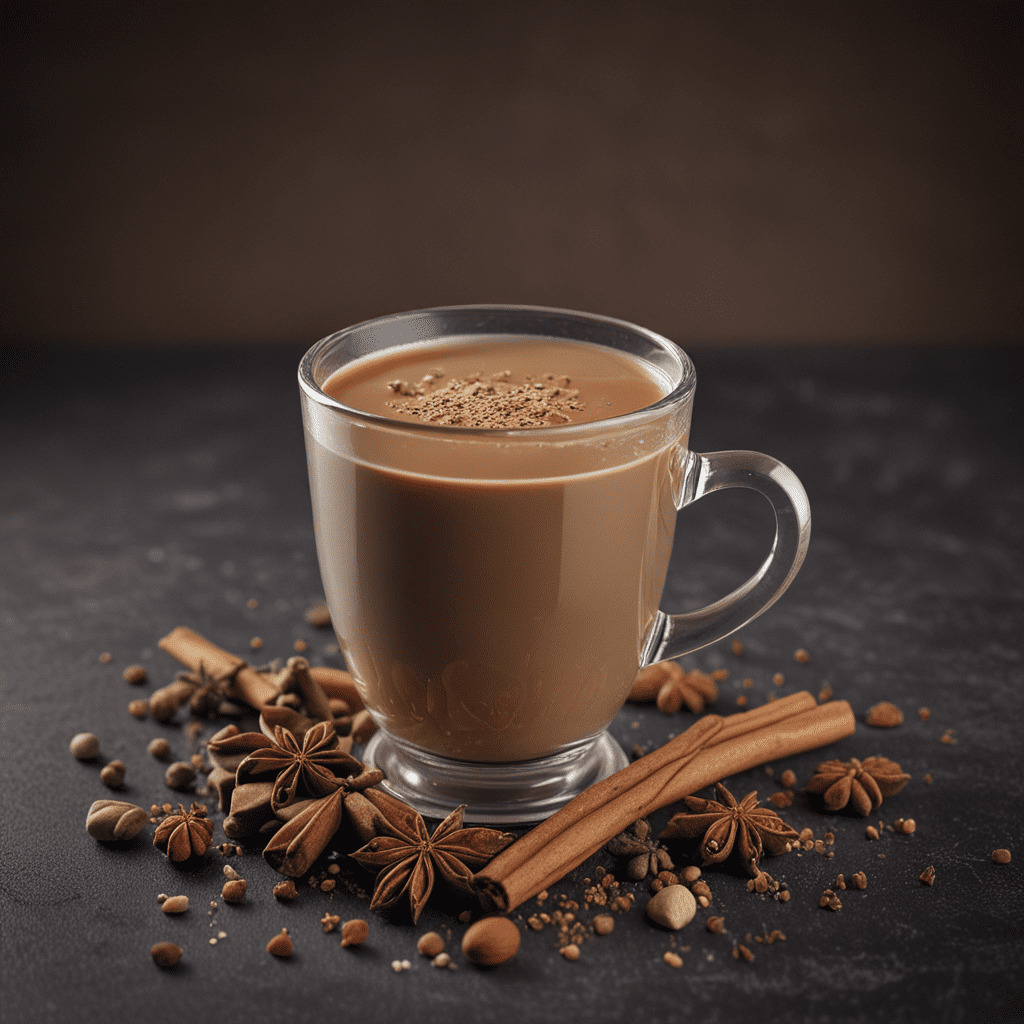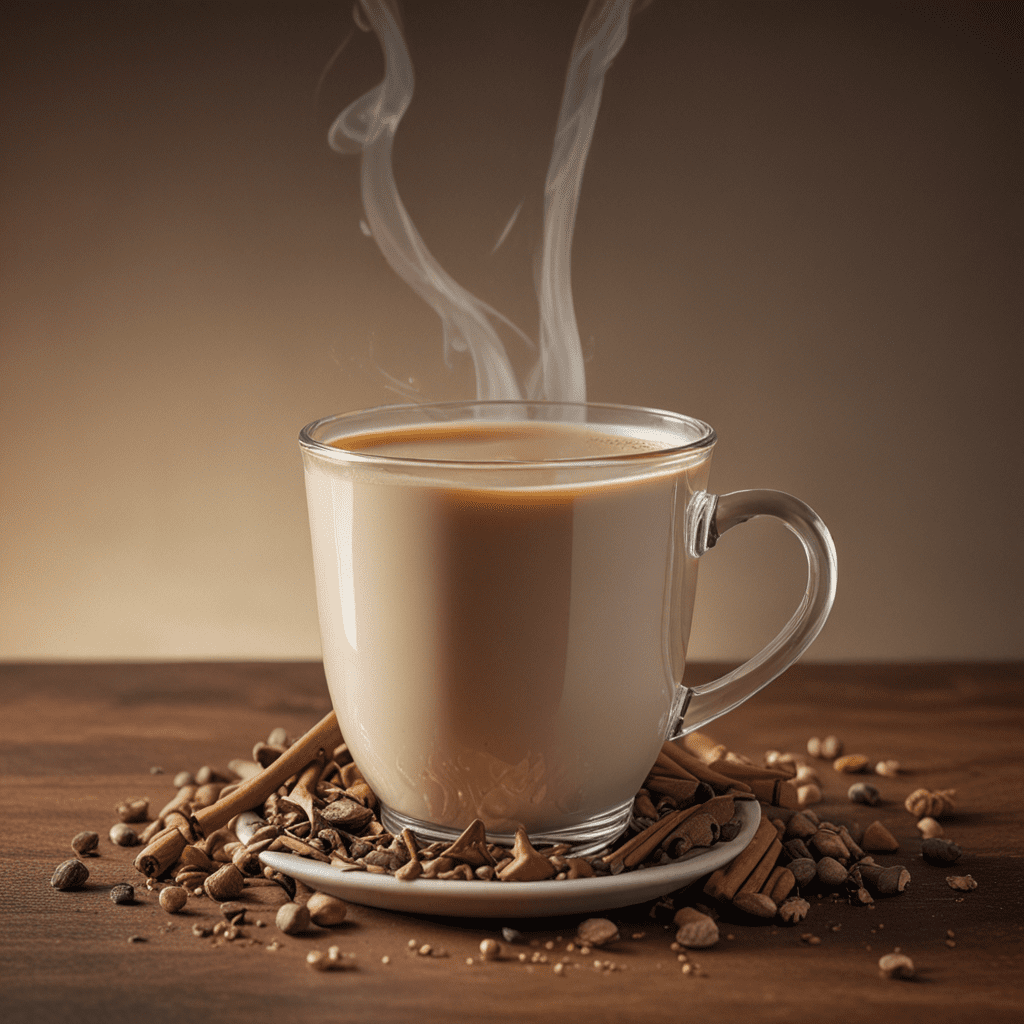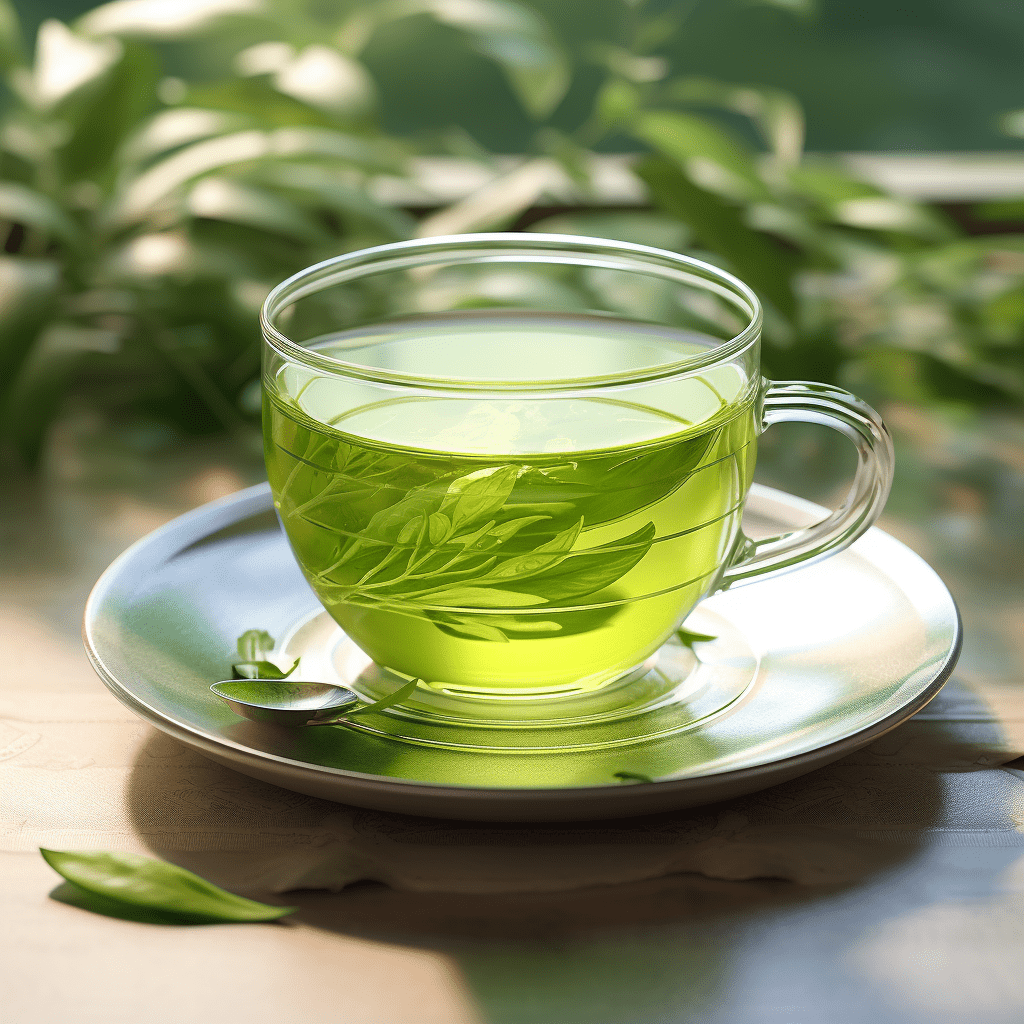1. Unveiling Chai Tea: A Rich Cultural Heritage
Chai tea, a beloved beverage enjoyed around the world, is steeped in a rich cultural history that spans centuries. Originating in India, chai has become an integral part of the country's culinary and social fabric. Traditionally prepared with a blend of aromatic spices and black tea, chai has evolved over time, showcasing variations in flavors and preparation methods across different regions.
2. Exploring the Spice Symphony: Cardamom, Ginger, and Beyond
The enchanting symphony of spices that characterizes chai tea is a testament to its Indian roots. Cardamom, with its warm, slightly camphoraceous notes, forms the heart of the spice blend, elegantly complemented by the pungent warmth of ginger and the sweet-spicy fusion of cloves and cinnamon. Other spices, such as nutmeg, black pepper, and star anise, may also be incorporated, adding depth and complexity to the flavor profile.
3. Brewing Perfection: Techniques for an Enchanting Infusion
Brewing chai tea is an art form that requires careful attention to detail. Traditionally, chai is prepared by simmering black tea leaves in water with spices, milk, and sugar. The tea leaves are typically a blend of Assam and Darjeeling teas, providing a robust, full-bodied foundation for the spicy infusion. The spices are added whole or crushed, allowing their flavors to infuse gradually into the tea.
4. Healthful Perks: Chai Tea's Medicinal Properties
Beyond its captivating taste, chai tea is also renowned for its potential health benefits. The spices used in chai possess antibacterial, anti-inflammatory, and antioxidant properties. Cardamom is known to aid digestion and reduce inflammation, while ginger has been traditionally used to combat nausea and improve circulation.
5. Variations Across Cultures: From Indian to Persian
While chai tea originated in India, it has been enthusiastically adopted by various cultures worldwide, leading to exciting variations in flavors and preparation methods. In Pakistan, chai is often made with green tea, while in Afghanistan, it is traditionally flavored with saffron and pistachios. Persian chai, known as "chai dam," is characterized by the addition of rose petals, providing a delicate floral touch to the beverage.
6. Pairing Delights: Chai Tea's Perfect Accompaniments
Chai tea's versatility extends beyond solitary enjoyment, as it harmoniously complements an array of culinary creations. Its rich, spiced flavors pair exceptionally well with sweet treats, enhancing the sweetness and providing a tantalizing contrast. Chai tea can elevate the experience of pastries, cakes, and cookies, transforming them into unforgettable indulgences.
7. Culinary Creations: Incorporating Chai Tea into Cuisine
The culinary potential of chai tea is not limited to beverages; it has captivating applications in the kitchen as well. Its aromatic flavors add a unique touch to savory dishes, imbuing them with warmth and complexity. Chai tea can be incorporated into marinades for meats, adding depth to grilled or roasted dishes. It also lends itself beautifully to sauces and glazes, providing a distinctive edge to both sweet and savory creations.
8. Sensory Exploration: Aroma, Taste, and Texture
Chai tea is a symphony for the senses, engaging the olfactory, gustatory, and tactile receptors in a captivating dance. Its aroma is an enticing blend of sweet and spicy notes, promising a captivating taste experience. The first sip reveals a harmonious balance of flavors, with the warmth of spices mingling seamlessly with the robust character of black tea. The texture of chai tea is velvety smooth, thanks to the addition of milk, providing a comforting and indulgent sensation.
9. Chai Tea Rituals: Connecting with Tradition and Community
In many cultures, chai tea is not merely a beverage; it is an integral part of social rituals and community gatherings. In India, chai is often served as a welcoming gesture, fostering connections and fostering a sense of belonging. In some regions, chai is prepared in large communal pots, symbolizing unity and shared experiences. The act of sharing chai transcends the simple consumption of a beverage; it is a ritual that strengthens bonds and celebrates community spirit.
10. Beyond the Mug: Chai Tea's Impact on Global Gastronomy
Chai tea has transcended its humble origins in India to become a beloved beverage and culinary staple worldwide. Its influence is evident in the menus of countless cafes, restaurants, and teahouses, where it is celebrated for its distinctive flavors and versatility. Chai tea has also inspired the creation of numerous tea-based products, such as lattes, iced teas, and even desserts, showcasing its profound impact on global gastronomy.
Frequently Asked Questions about Chai Tea
What is the difference between chai tea and regular tea?
Chai tea is a spiced black tea beverage, typically made with a blend of aromatic spices like cardamom, ginger, and cinnamon. Regular tea, on the other hand, refers to unspiced black, green, or herbal tea leaves brewed in hot water.
How do you make chai tea at home?
To make chai tea at home, simmer black tea leaves with whole or crushed spices in water. Add milk and sugar to taste, and strain into cups.
What are the health benefits of chai tea?
Chai tea is believed to have several health benefits due to the spices it contains. Cardamom is known to aid digestion, while ginger has anti-inflammatory properties. Cinnamon may help regulate blood sugar levels.
Can chai tea be made with other types of tea besides black tea?
Yes, chai tea can be made with other types of tea, such as green tea, oolong tea, or herbal tea.
What are some popular chai tea variations?
Chai tea variations include masala chai (spiced Indian chai), Kashmiri chai (pink tea made with baking soda), and Afghan chai (flavored with saffron and pistachios).



